No one can agree where the name “Madrid” hails from. Some say it has Celtic origin, stemming from the word “Magetoritrum,” which partly translates to the word “ford.”
Others look to the Arabic word “majra,” which means “spring” or “water stream.” And other historians point to the word from Mozarabic—or Andalusian Arabic—“matrix,” which also means “water stream.”
Whatever the case, this Iberian metropolis of 3.4 million inhabitants boasts 131 different neighborhoods, each one with its own style and vibe. Even life-long madrileños don’t end up seeing every single neighborhood. Neither should you. But if you’ve ever been curious about the origins of some of the neighborhood names—and, really, who hasn’t?—then here are 10 neighborhood name origins in Madrid to get you started.
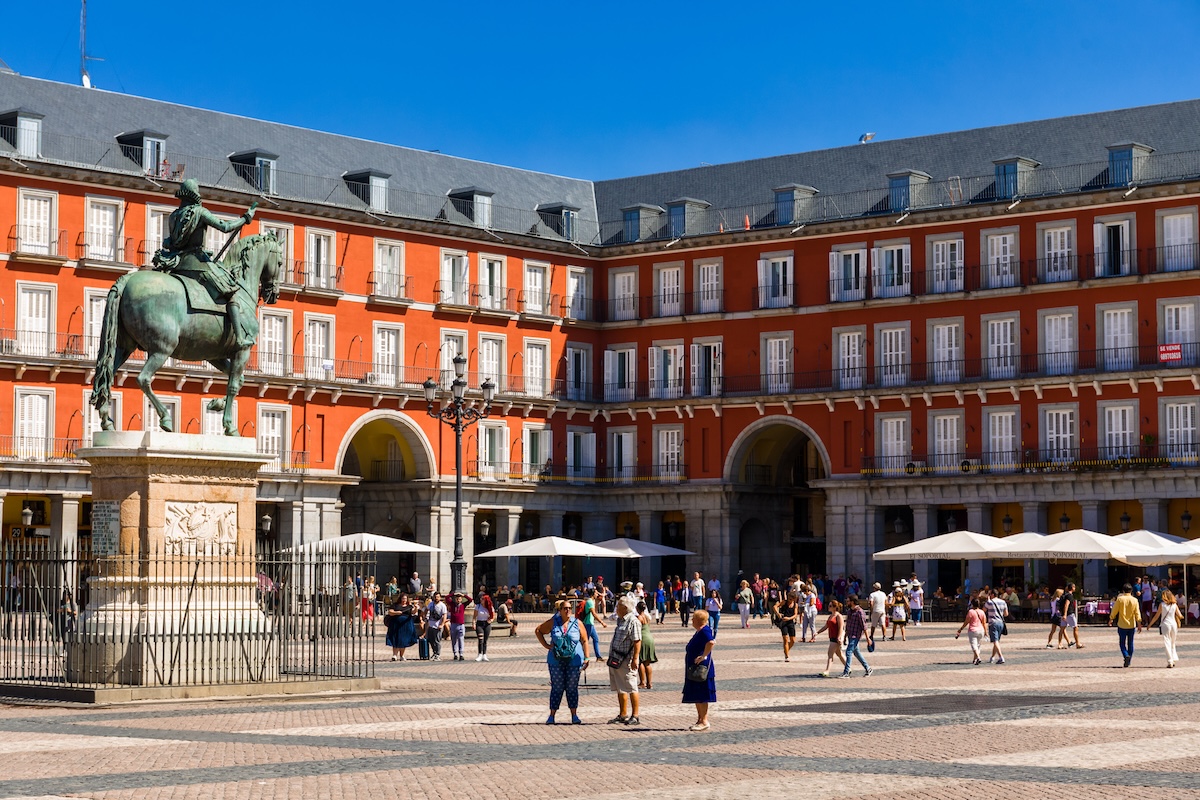
Los Austrias
Officially called El Madrid de los Austrias, this centrally located barrio is the oldest neighborhood in the Spanish capital. Isabel and Ferdinand, also known as the Catholic Monarchs, gave birth to Charles V who would later go on to become Holy Roman Emperor and forged a union with the powerful Habsburg family who were largely based in Vienna.
Charles V’s son, Philip II became king of Spain in 1556. He was instrumental in the formation and growth of Madrid, making it the capital of Spain. Because of the family’s Austrian connection, the first neighborhood was known as Los Austrias.
Today some of the iconic sites of Los Austrias include:
- Plaza Mayor, Mercado de San Miguel, Teatro Real, The Royal Palace, and Catedral de Santa Maria la Real de la Almudena.
Want to get to know Los Austrias better? Step into the heart of Spanish royalty on our Royal Madrid: Skip-the-Line Palace Tour with Gardens. Our expert guides will reveal hidden ruins, historic squares, and the grandeur of the palace itself, finishing in the serene Sabatini Gardens. Join us for an unforgettable journey through Madrid’s oldest neighborhood!
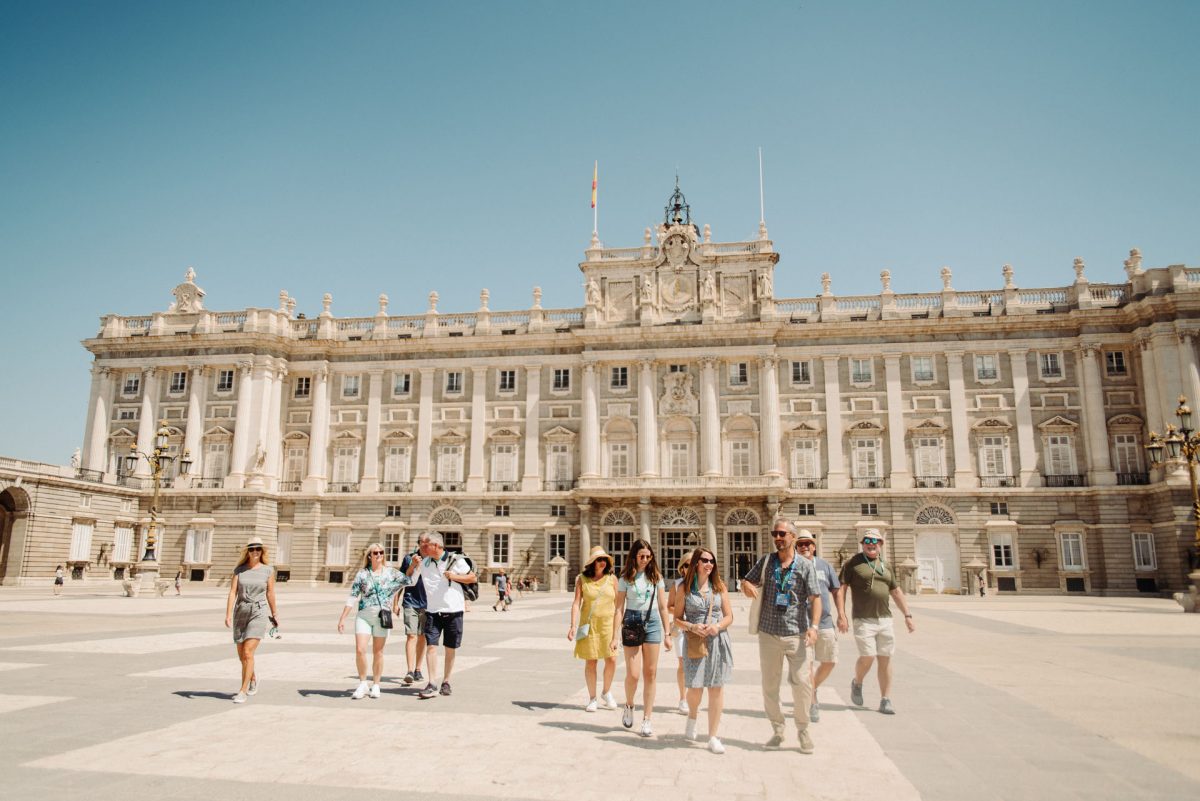
Puerta de Sol
The large central square known as Puerta de Sol is today a tourist-filled space that many locals try to avoid. As a visitor to Madrid, you have to visit the plaza at least once—similar to Times Square in New York or Piazza San Marco in Venice.
But Puerta de Sol wasn’t always filled with sandal-clad masses of humanity. It began life in the 15th century as a gate to the city—hence the name “puerta,” or gate or door—connected to the old city walls.
The name “sol,” or sun, comes from the fact that there was an image of the sun on the gate to denote that Puerta de Sol was facing east at the time, the place where the sun rises.
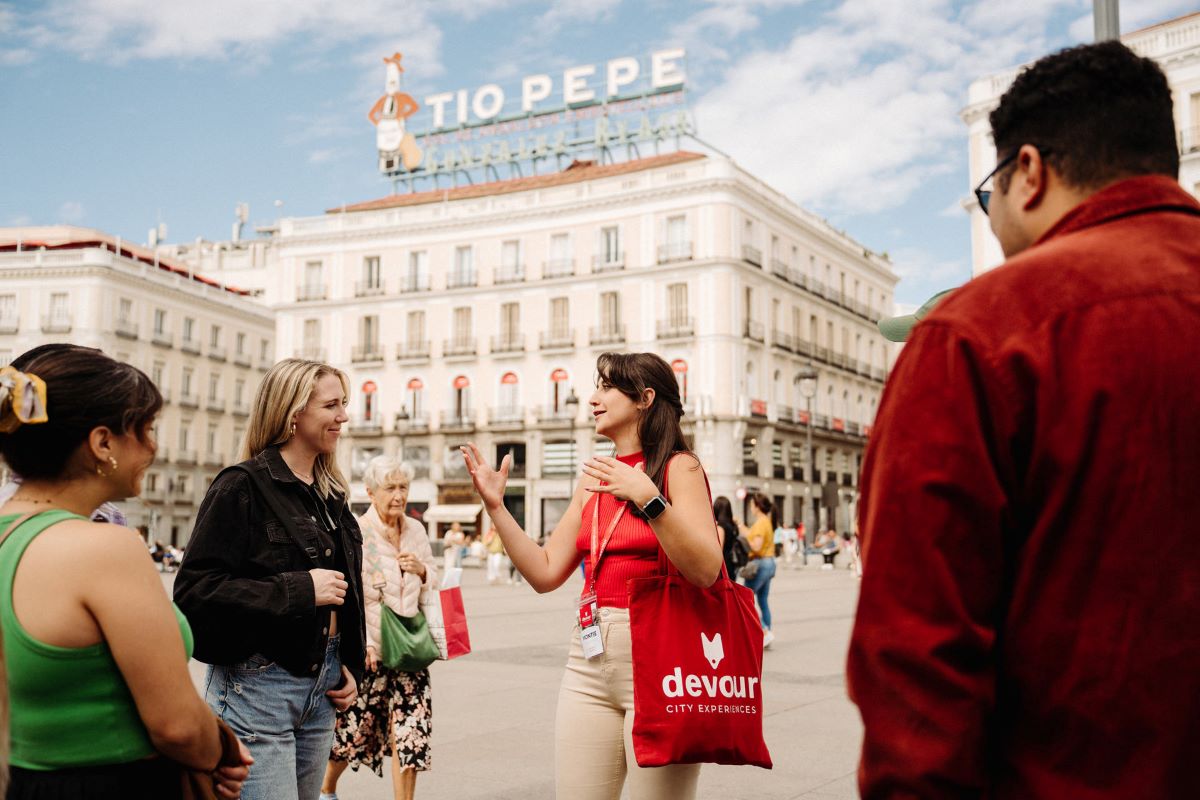
La Latina
Smack in the center of Madrid, La Latina takes its name from Beatriz Galindo. She was a writer and humanist and was the tutor of Queen Isabel, the Catholic Queen, and her children. Because Galindo was so impressively skilled in speaking, writing, and teaching the Latin language, she earned the nickname, “La Latina.”
The neighborhood is made up of a tangle of narrow, curving cobblestone streets, many of which spill out into diminutive plazas.
While wandering around La Latina, pay close attention to the street and square names, as many are named after the merchants who stayed here while they sold their goods at the market. Plaza de la Paja (Straw Square), Plaza de los Carros (Carriage Square), and Plaza de la Cebada (Barley Square) are just a few examples.
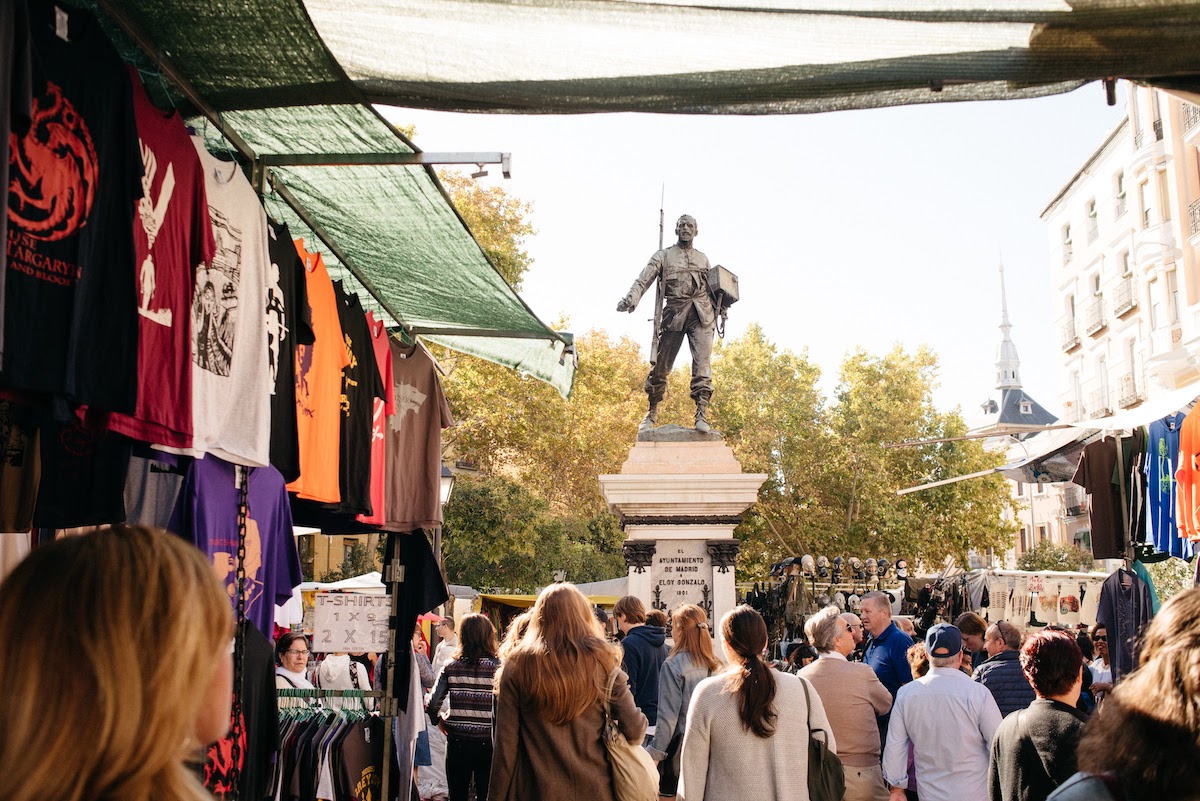
Barrio de las Letras
As the name suggests, Barrio de las Letras is known for its erstwhile literary inhabitants. In the 16th and 17th centuries, considered the Golden Age of Spanish writing and literature, master wordsmiths Cerventes, Góngora, Lope de Vega, Triso de Molina, and Quevedo spent time here.
And while the neighborhood itself is nearly 5 centuries old, a majority of the buildings you see here today are from the 19th and 20th centuries. The ambient, narrow streets of las Letras are flanked by numerous restaurants and bars.
Want to get to know the Literary Quarter up close and personal? Join us on our Madrid Tapas & Wine Tour . We’ll enjoy bites and drinks from quirky taverns to historic spots turned chic eateries. Come with us for an evening that will leave you savoring every moment of your stay in Madrid.
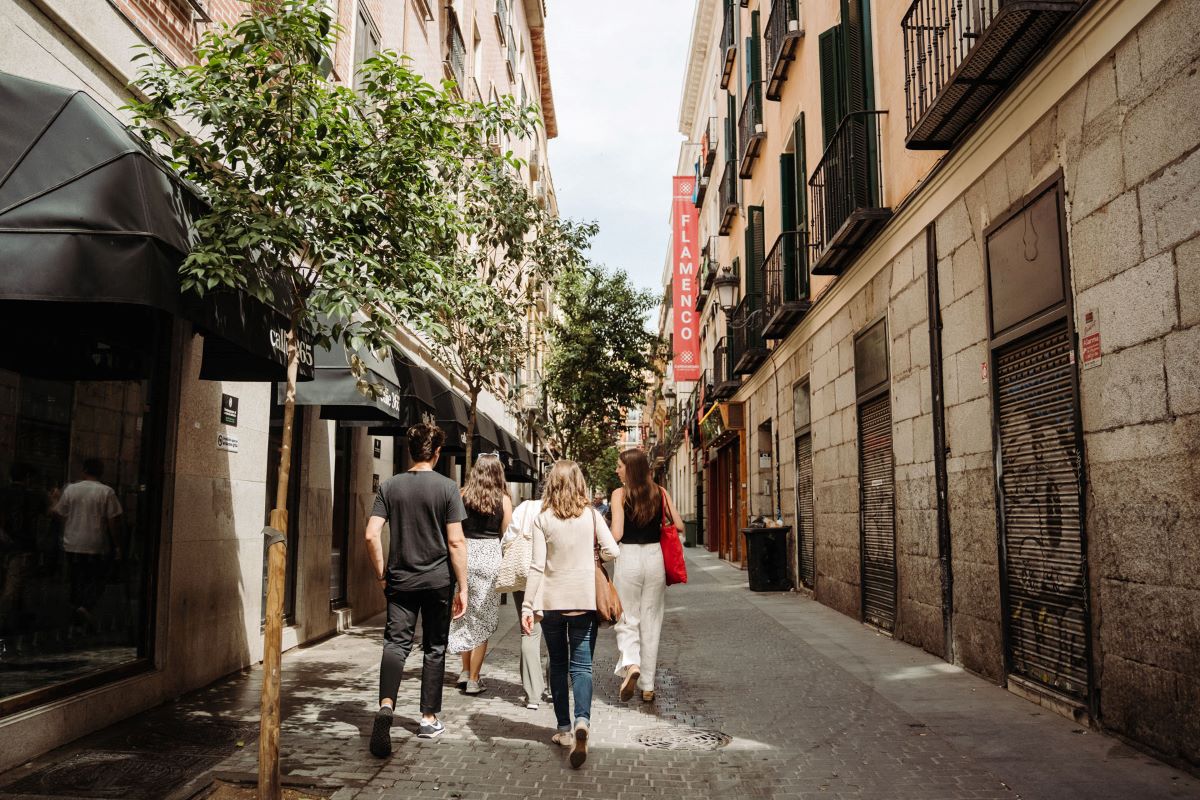
Salamanca
Not the university town of Salamanca, but the neighborhood in Madrid. This grid-like neighborhood north of the center of town was developed in the second half of the 19th century when the city began to expand, thanks, in part, to Queen Isabella II.
The name comes from the neighborhood’s designer, Málaga-born José de Salamanca y Mayol, the Marquis of Salamanca. His vision was a neighborhood inhabited by the city’s political and financial elite.
He got his wish. Today the neighborhood of Salamanca is one of the most posh areas of the city, as restaurants, cafes, and upscale shops are frequented by “pijos,” preppy or posh people.
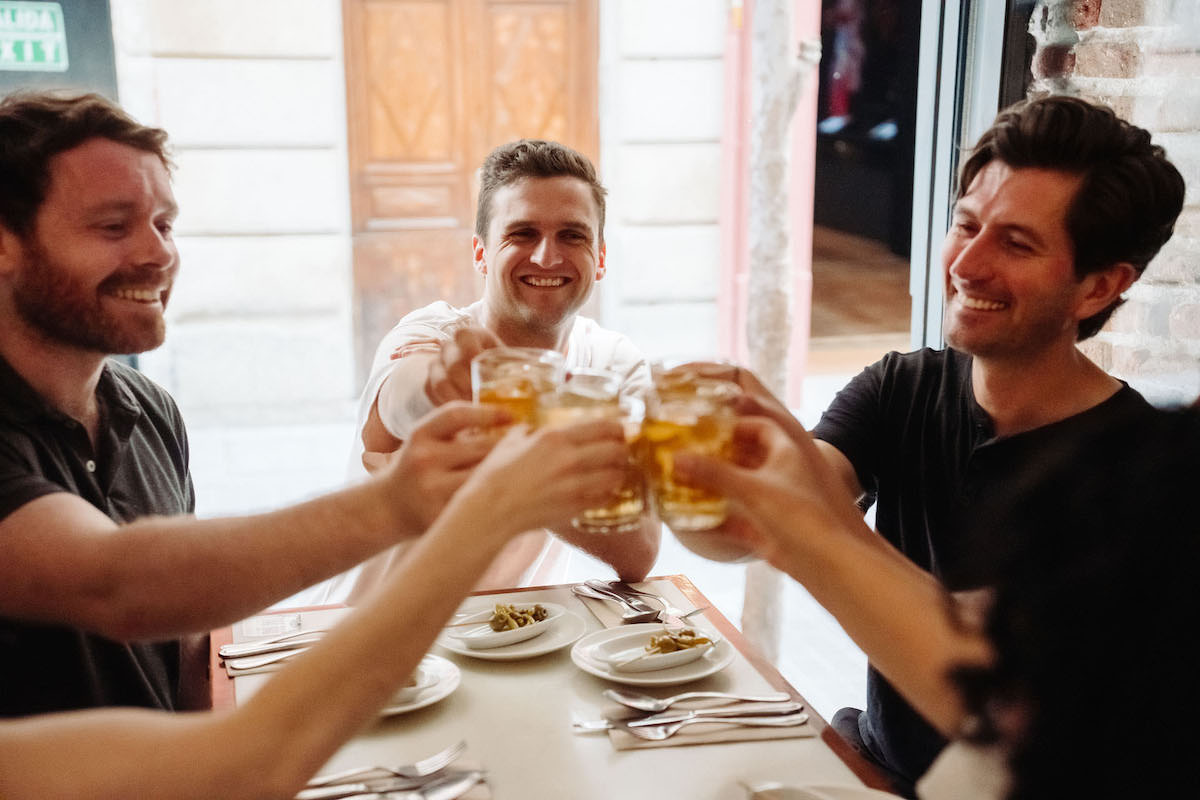
Malasaña
North of Gran Via and east of Plaza de España, centrally located Malasaña is crammed with hip bars and cafes, intriguing street art, and is the cradle of the movida madrileña, the artistic counterculture movement that took place in the second half of the 1970s (and into the ‘80s) in the wake of the death of longtime dictator Francisco Franco.
The name Malasaña, literally translated as “Bad Fury,” is actually derived from Manuela Malasaña, a heroine and victim of the May 2, 1802 massacre that took place here, in which madrileños rose up to fight the occupying French troops under Napoleon.
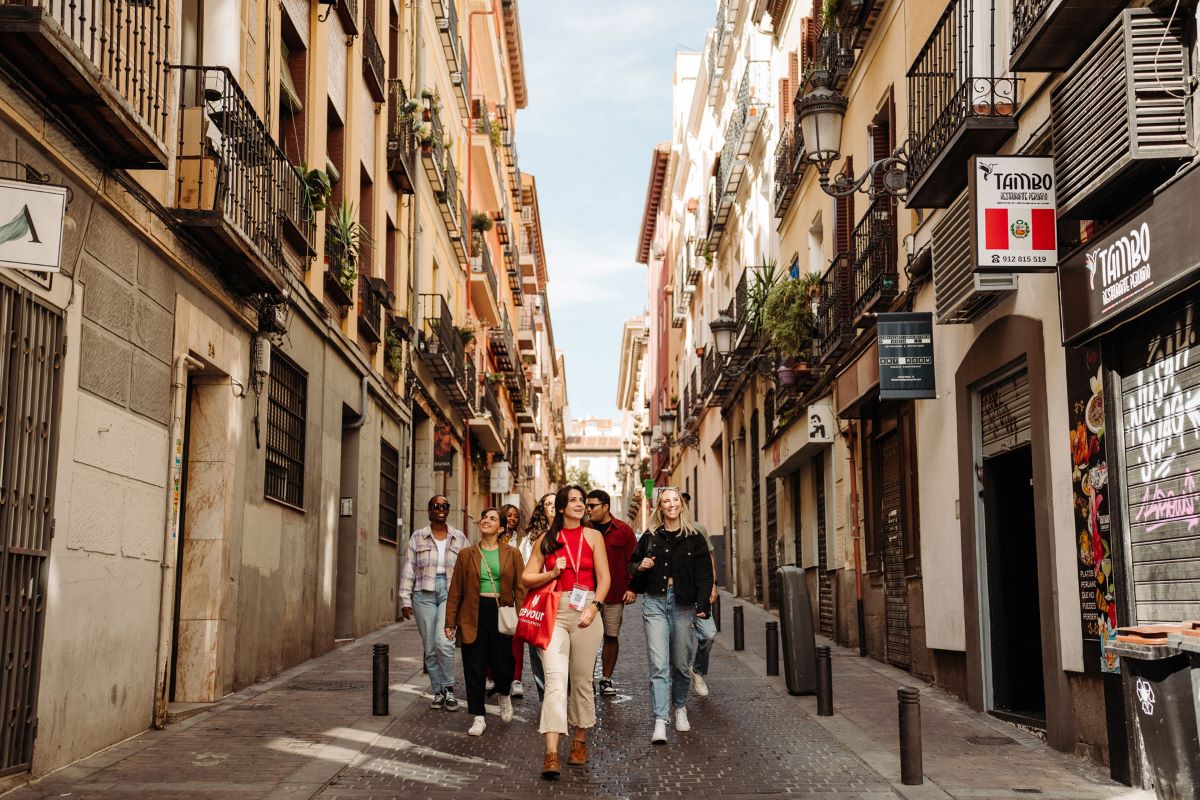
Lavapiés
Lava = Wash + Piés = Feet: Washfeet. Lavapiés might be the most curious neighborhood name in all of Madrid, if not the entirety of Spain. No one is actually sure how the neighborhood began being called Lavapiés, but many attribute the moniker to the fountain in the neighborhood’s main square, Plaza de Lavapiés.
These days Lavapiés is well-known for its diverse immigrant community and the restaurants that represent their cultures. The area is also known for its rough-around-the-edges cafes and bars, as well as hip counter-culture book shops and clothes stores.
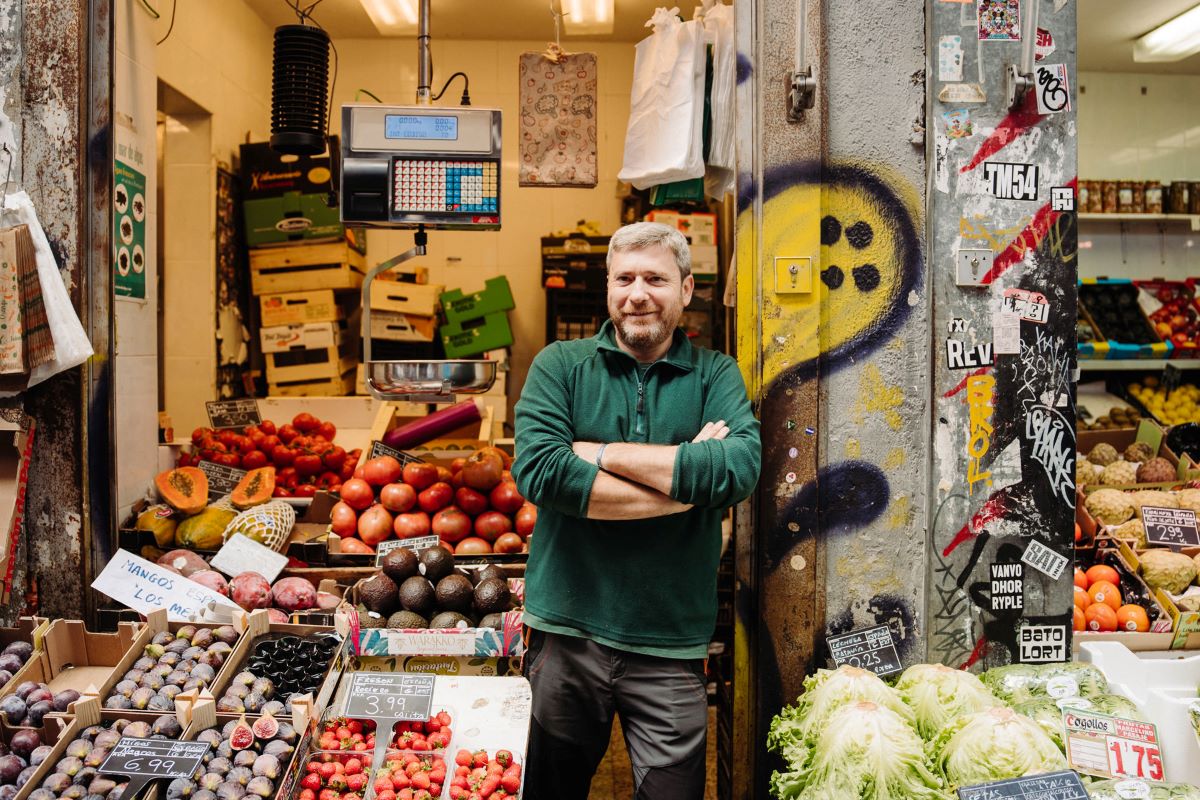
Chueca
Perhaps the least interesting thing about centrally located Chueca is the origin of its name, which comes from the plaza named after Federico Chueca, a composer of zarzuela, a genre of music that combines opera and a lot of drama. Federico Chueca died at the beginning of the 20th century.
Chueca was once a degraded no-go zone for non-locals. But its fortunes began to change in the 1970s. And a decade later in the ‘80s, the neighborhood became home to many people from the LGBTQ community.
Stroll around this uber-trendy area today and you’ll see an intriguing mix of geriatrics, life-long Chueca residents, and gay couples, strolling the streets, both demographics happily in a co-existence together.
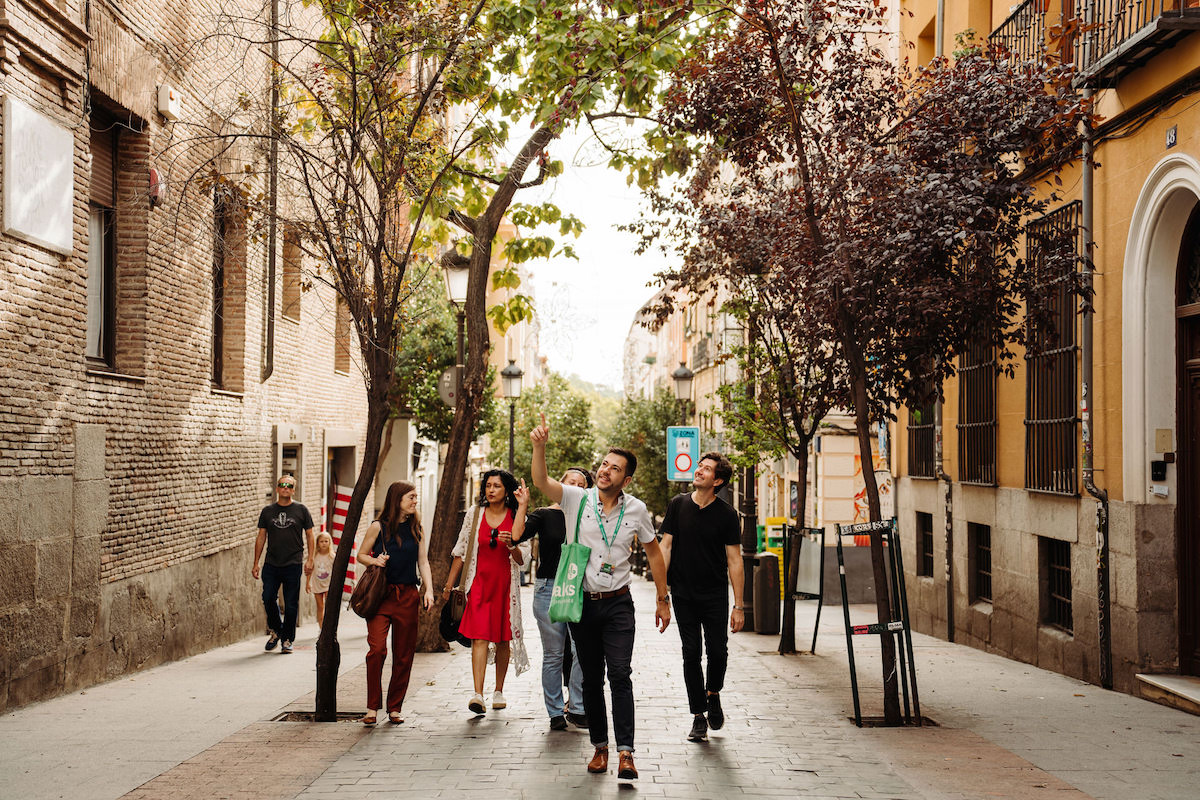
Vallecas
Is Vallecas, a diverse neighborhood southeast of the center of Madrid, spelled “Vallecas” or “Vallekas”? It depends on who you ask. The neighborhood is known for its working-class denizens, its ethnic diversity, and its counter-culture vibe.
During the Franco dictatorship, the neighborhood was a center of resistance. Spelling the name of the neighborhood with “k” instead of a “c” is a political act, a transgressive statement about the neighborhood’s stance on politics. Historians can’t agree on exactly where the name originates from.
The Valle de Cas, or Vallecas, first appeared in writing in 1202 and refers to an oak forest just outside of Madrid, likely the place where the neighborhood now sits. There was a villa here, which is why the neighborhood is officially called Villa de Vallecas. Today, the bustling area is filled with no-frills but fun bars, including a few heavy metal-themed bars.
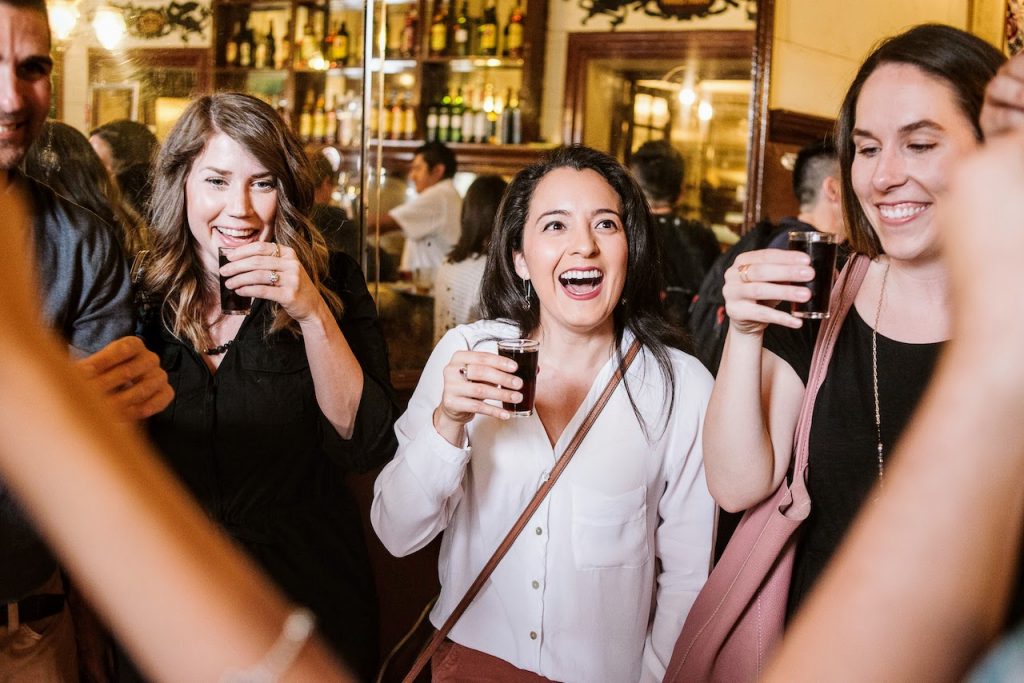
Prosperidad
In 1625, Philip IV ordered a new wall to be built around Madrid. And just over 200 years later, the city was expanding so quickly that the old walls could no longer contain it. And so, on July 19, 1860, the city officially decided to take down the walls and let the city spread far and wide.
That’s when a man named Prospero Soynard comes into play. In 1862, Soynard acquired some land north of the city with the idea of dividing up the land and selling it. On December 14, 1862, bricklayer Pedro Prado and carpenter Gregorio Mayorga bought two plots of land from Prospero Soynard and the two men quickly began constructing houses in the area that would be called Prosperidad.
Today the neighborhood, located about three miles northeast of Puerta del Sol in the center of Madrid, is a thriving residential neighborhood and is part of the larger Chamartin District.
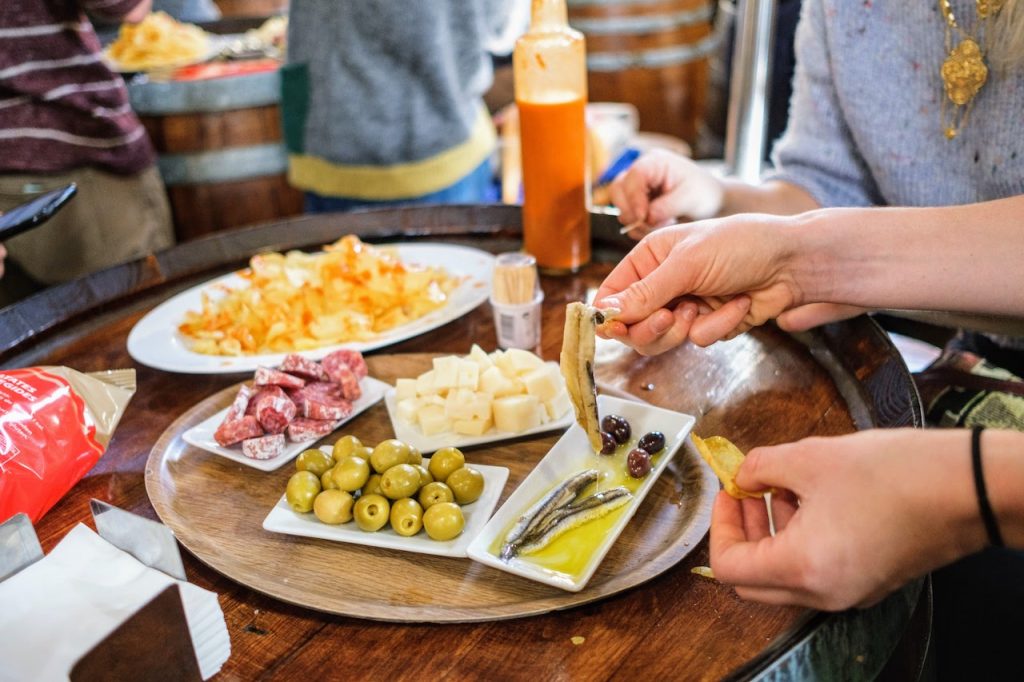
Want to learn more about Madrid’s central areas with a local insider? Stroll through Madrid’s iconic streets, uncover its vibrant history, and savor its rich culture on our Madrid in a Day Tour. From royal palaces to hidden gems, let our expert guides bring the city to life.

